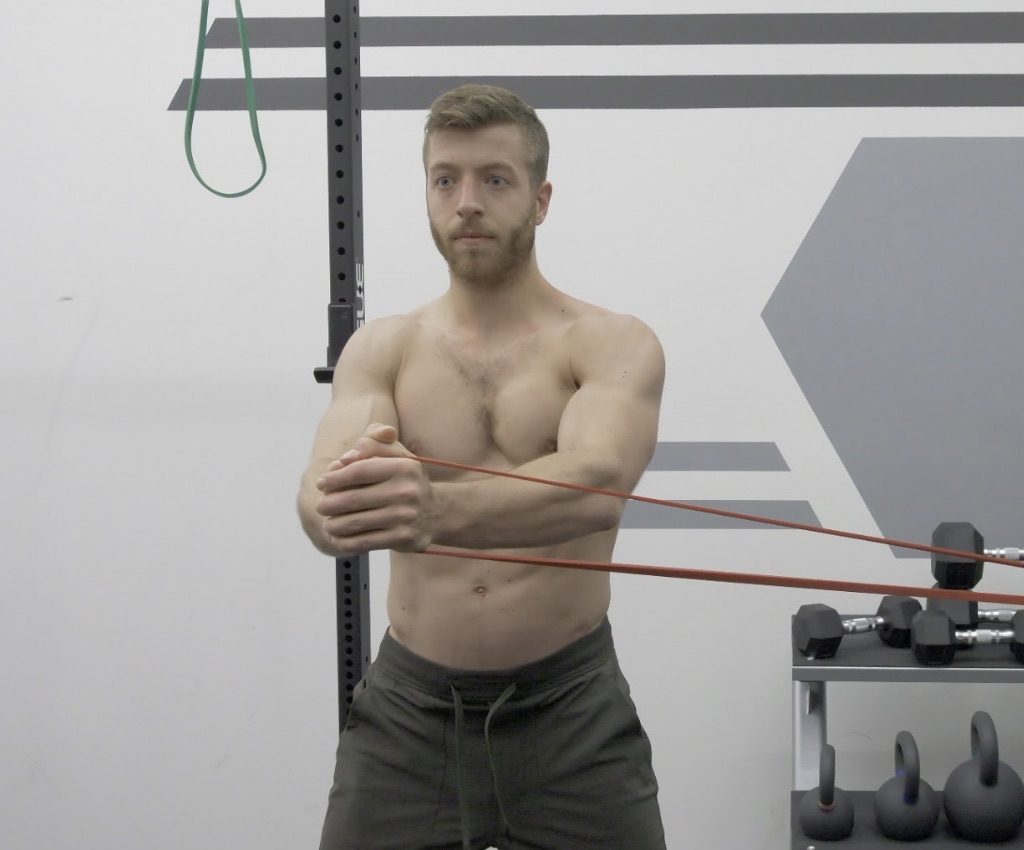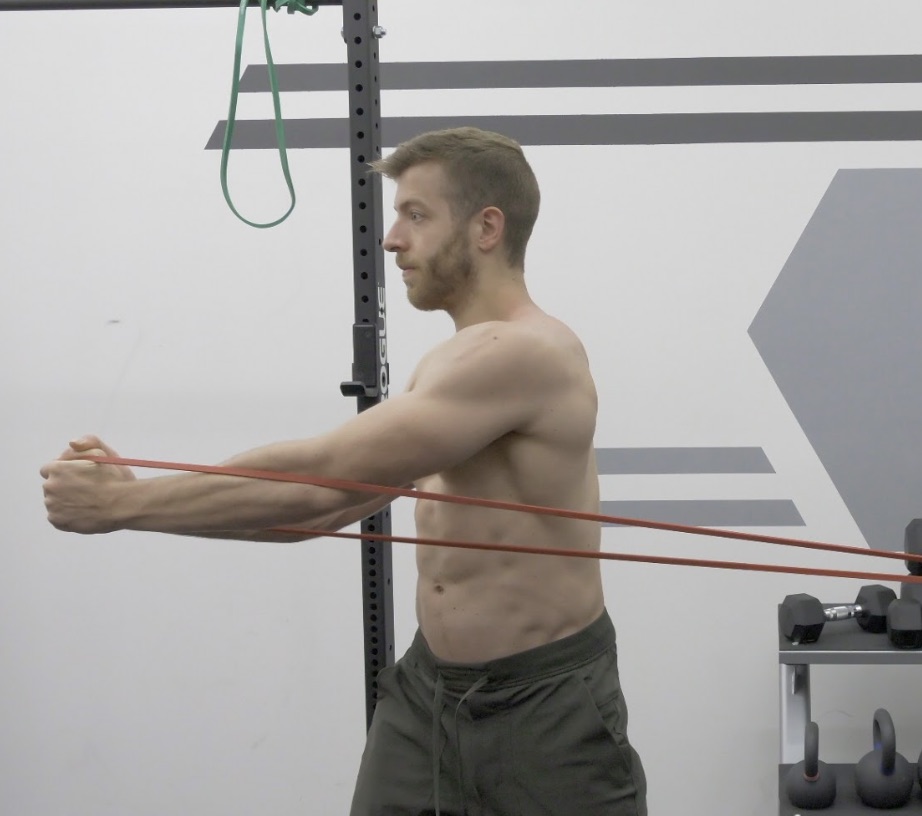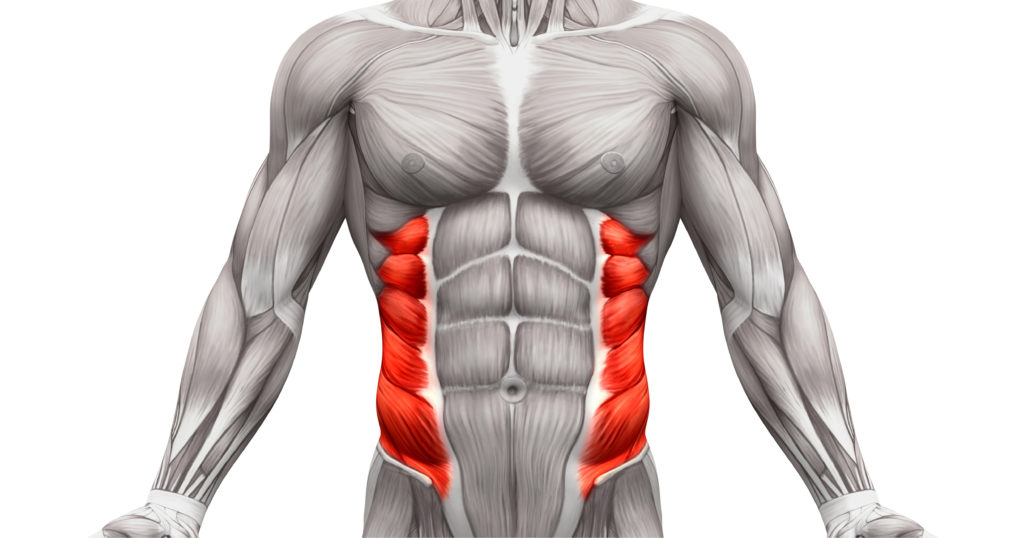Rotational core training is key for most sport athletes. Developing a stronger core, however, can also impact lifters, fitness enthusiasts, and desk bound individuals looking to improve lower back health, core strength, and enhance movement patterning.
The cable chop is a movement that can increase core strength, address sport specific training needs, and increase muscular development of the abdominals and obliques. In this article we will go through everything you need to know about the cable chop, including:
- Cable Chop Form and Technique
- Benefits of the Cable Chop
- Muscles Worked by the Cable Chop
- Who Should Do the Cable Chop
- Cable Chop Sets, Reps, and Programming Recommendations
- Cable Chop Variations and Alternatives
How to Perform the Cable Chop: Step-By-Step Guide
Below is a step-by-step guide on how to perform the cable chop. Further below we will discuss a wide variety of variations and alternatives to the cable chop. Note, that the cable chop can be done at a wide variety of angles. You can also perform chops from high-to-low, low-to-high, and straight across pattern to maximize core development and coordination.

1.
Setup and Chop
Stand next to a cable machine, with the hands grasping the cable handle. The handles themselves should be set at roughly chest or shoulder height.
With the hands reaching across the body and towards the cables (your torso should be turned 90 degrees from facing the cable system), set a strong and athletic base with the knees slightly bent, feet flat, and spine neutral, then begin the chop.
Coach’s Tip: Pull the belly button inwards as you assume this loaded, Pallof press like position. Start with a slow pace, learning how to feel the muscles and perform the movement properly.

2.
Squeeze and Repeat
Once you have reached the finish position of the chop, stand upwards moving the hands back into the top position. Think about actively lowering the load and use the core muscles to do so.
3 Benefits of the Cable Chop
Below are three (3) reasons why the cable chop is beneficial for lifters and athletes of all types.
1. Rotational Power
Rotational force production and power application is key for many sports athletes, fighters, and everyday warriors. Movements like cable chops and rotational training exercise can help to develop necessary muscle mass and coordination to then transition into more sport specific skills and movements (such as throwing, punching, kicking, etc). Note, that these can help to improve force production and power.
2. Decreased Spinal Stress
With proper rotational movement and core stability, athletes and coaches can minimize shearing stress placed upon the spine during many athletic and training movements. Lack of muscle coordination, core strength, and anti-rotational strength can result in injury to the lumbar spine and/or hips, knees, and shoulders.
3. Abs that Pop
There is no shame in wanting to bring out those abs and obliques. While a majority of this is done in the kitchen (nutrition), you can perform movements like the cable chop to increase strength, muscle hypertrophy, and overall development of the obliques and transverse abdominals.
Muscles Worked – Cable Chop
The cable chop is an exercise that targets the core stabilizers and anti-rotational strength muscles. In addition to the core muscles, the glutes and majority of the upper body muscle groups assist in the position strength necessary to perform the movement.
- Obliques
- Rectus and Transverse Abdominals
- Gluteus Minimus and Medius
- Shoulders, Scapular Stabilizers, and Arms (secondary muscle groups)

Who Should Perform Cable Chop?
Below are a few groups of athletes that can benefit from including cable chop within their training programs.
Strength and Power Athletes
Strength and power athletes can use the cable chop to develop greater core strength and rotational coordination. Most strength and power sports are sagittal in nature, demanding lifters to stabilize the core under load rather than promote rotational force and power. The cable chop can be a great movement to bulletproof core training and stabilize the lumbar spine during movements.
Competitive CrossFit and Fitness Athletes
Competitive CrossFit and Fitness athletes can integrate cable chops into training programs to increase core stability and development. While the movements found in most workouts are primarily sagittal in nature, the ability to resist rotational forces and promote coordinated movement outside of the sagittal plane can improve overall athletic potential and injury resilience.
Sports Athletes
Sports athletes can improve rotational strength and power, establish midline stability, and improve core activation during athletic movements. Athletes who rely heavily on rotational power (baseball, softball, football, throwers, etc) can use cable chops to develop the muscle groups involved in sport-specific movements.
General Fitness and Desk Bound Individuals
For general fitness and desk bound individuals, learning how to properly brace the core and promote rotation through the body rather than the lumbar spine is a necessary skill. While the cable shop can develop this and increase muscle coordination of the core and obliques, many beginners should master less dynamic anti-rotational core training exercises like dead bugs and Pallof presses.
Cable Chop Sets, Reps, and Weight Recommendations
Below are two (2) primary sets, reps, and weight (intensity) recommendations for coaches and athletes to properly program the cable chop. For training purposes, repetitions and tempos are often used to target muscular hypertrophy and endurance.
Muscle Hypertrophy
- Sets & Reps: 4-5 sets of 8-12 or 15-20 repetitions.
- Tip: Tempos, pauses, and eccentrics can be done throughout the range of motion to induce additional muscular damage and hypertrophy.
Muscle Endurance
- Sets & Reps: 2-4 sets 15-20 repetitions
- Tip: Be sure to keep the core stable during this movement, as fatigue can often cause poor set up and unnecessary stress on the lower back and/or a lifter using their upper bodies to move the load.
4 Cable Chop Variations
Below are four (4) cable chop variations to increase core stability, muscle hypertrophy, and midline control.
1. Kneeling Cable Chop
The kneeling cable chop is done in an identical manner to the standing cable chop variation, with the exception that the lifter is performing the movement on their knees. In doing so, you minimize the ability to use the legs and hips to promote rotational force; increasing demands upon the obliques and core stabilizers.
2. “Dead Bug” Cable Chop
This cable chop valuation is done with a lifter placed on their back in the dead bug position, perpendicular to the cable stack. As they lie on their backs and promote core stability, they can simultaneously perform a cable chop in a limited range of motion.
This can help to progress a dead bug exercise and provide a progression for lifters and athletes who may lack stability and coordination to fully embark on the cable chop movement.
3. High to Low Cable Chop
The high-to-low cable chop is done by performing a cable chop with the hands starting in the high position. As you perform the chop, the torso and hands drop on a downwards 45 degree angle, ending with the hands at roughly knee height. This can help target the obliques and reinforce stronger movement throughout a wider range of motion.
4. Low-to-High Cable Chop
The low-to-high cable chop is done by performing a cable chop with the hands starting in the low position. As you perform the chop, the torso and hands raise on an upwards 45 degree angle, ending with the hands at roughly shoulder or head height.
3 Cable Chop Alternatives
Below are three (3) cable chop alternatives that can be used to improve core stability and strength.
1. Medicine Ball Throw
The medicine ball throw and/or slams are ballistic core rotational exercises that can help bridge the gap between strength training and real-world movement application.
By performing lateral throws and slams you can promote core rotation power and coordination.
2. Dumbbell Woodchops
The dumbbell woodchop is done in a similar way to the low to high cable chop. By using a dumbbell rather than a cable system, you remove the need for expensive cables making this core development exercise more accessible to lifters and athletes.
That said, the dumbbell does limit the amount of tension on the lifter throughout the range of motion and can minimize the direct loading of the obliques and core due to gravity and the line of pull.
3. Pallof Press
The Pallof press is a less dynamic cable chop variation that can be used to train beginner lifters and athletes on how to properly stabilize the spine under load and low velocity movements. To do this, simply perform isometric holds, presses and pulls.
More Core Training Articles
Here are a few more articles you can read to develop a stronger core, improve bracing capacities, and reduce the risk of injury to the lumbar spine.